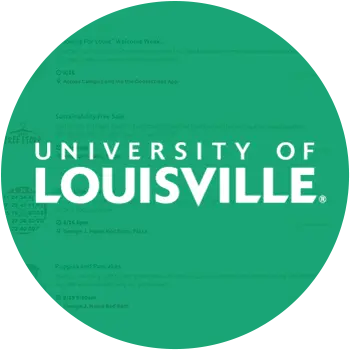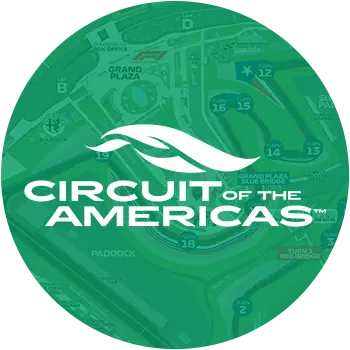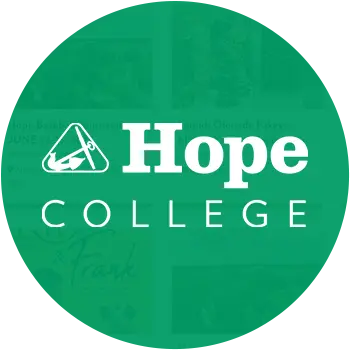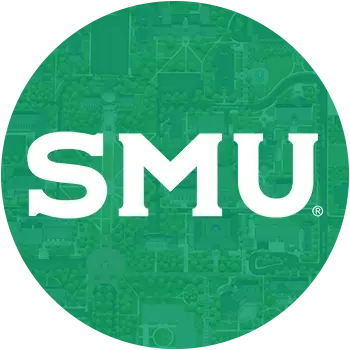Read the transcription
Shiro Hatori
Okay, hello, everyone. Welcome to the higher ed Demand Jam podcast hosted by concept 3d. On this podcast, we’d like to discuss topics around creating and capturing demand in higher education. Specifically, before we jump in to our interview, I’d love to just go over what concept 3d Does the concept 3d has served over 600 Happy customers in higher education with our best in class, interactive maps, virtual tours, and localist events, improve your campus communications, student engagement and recruitment with our powerful solutions. My name is Shiro. And I’ll be your host today. And today, I’m super, super excited to have Dominic Monty join us. Dom is the creative director and design strategist at your science college. And he is also an adjunct professor or sorry, adjunct instructor on advanced web design and strategy. Thank you so much for joining us today,
Dom Monte
though. Thank you. It’s a pleasure to be here.
Shiro Hatori
Awesome. And I love to ask this question lately around, you know, what do you love about higher ed. But I think, you know, I wanted to also ask you a little bit more about your career shift into higher ed, because I think it’s an amazing story. And so I think you’ll cover it there. But do you want to give us a quick background and how you got into higher ed?
Dom Monte
Sure, I would say so I spent 15 years working in corporate in a similar role to what I’m doing right now. And one of the things that we had done, was working with colleges on a on a sponsorship level. And I really started to really fall in love with the idea of being in higher education. And just the whole the, I guess, like the purpose of like a nonprofit world in general. So fast forward a little bit, some circumstances happened, where I kind of fell into a spot where I was looking for a new position. And I use those connections to sort of get involved with or scientists and like, it’s been great, since it’s been four years, and I’ve had a really, really good time with it. And it’s been all I really kind of hoped it would be like and one of my favorite things about it is like my whole career sort of shifted, I also fell into a teaching opportunity at a separate institution, where the advanced web design and strategy class comes in. And it really, I feel that like, I love the idea of working and designing with a purpose in mind is that no, it’s not necessarily profit driven. Obviously, money is important and all that other stuff. But like, you know, the the overall mission is is more about the students. And everything that we do is about helping the student experience one way or the other, whether it’s print digital on campus, all of which falls under my team’s work.
Shiro Hatori
That’s amazing. And, you know, I actually haven’t had I think you’re the first person I’ve interviewed, that’s had the title of creative director, like, can you tell us a little bit about like, what your day to day looks like? I’m very curious.
Dom Monte
So like, one day is not usually the same as the next. So it’s one of the harder questions I ever get. But so my, we work on admission marketing, we work on a lot, we’re a smaller school. So like we I know, larger schools will have different communications and marketing teams within different business unit units. We have one team here, that sort of services, everybody to an extent. So my team will work on admission marketing materials, print, and digital, for the admission marketing group. And then we also have alumni relations, our Advancement team where we work on like annual reports and videos for them. But at the same time, we also have a campus to deal with. So we we design stuff for the on campus experience. So in a way my team addresses the the pre the Doric, and the post graduate student that comes through here. And I like working on the small team and the small school, and it really gives us that opportunity to sort of like see the big picture.
Shiro Hatori
That’s amazing. So, you know, sounds like you. You’re in a position where you work across all the departments and everything’s, you have great communication along all those departments. Is that something a culture that was already in place when you joined?
Dom Monte
I think so if it wasn’t completely in place, it was something I think we’re always striving for. We just have our new president and inauguration about a week and a half ago, where that’s been like that’s like almost one of the rallying cries that’s coming from her, her her tenure here. And I think it’s something that we’ve always like, nobody’s ever really worked against it. But it’s always that we’re striving towards and I think having just as one central communications team, which encompasses not just creative, it has an editorial, we have news, we have social media that like we’re really kind of in touch with everybody around campus, like I deal with faculty members as much as I do with our alumni relations department. So
Shiro Hatori
that’s amazing. I literally just came off a conversation with a future guest of pride Piper We were just he’s a more of a analytics person, or at least we discussed analytics. And he was, you know, how telling us how the analytics are bringing together a lot of the marketing for a school. And so just just a theme, and I keep hearing, so that’s great.
Dom Monte
Yeah, I know, we’re focused on that, too. That’s not my expertise, I will help with that. I will, like analyze it, and I will, I will work towards that stuff. But we, we have those touches around campus as well.
Shiro Hatori
That’s amazing. I know, in our previous conversation, we talked a lot about personalization. And why it’s so so important in marketing, especially in higher education. And can you tell us a little bit more about your thoughts on that? And how maybe you’re implementing that today? In your day to day or in your job?
Dom Monte
Yeah. So I mean, personalization for us is key, one of our, if you just flipped through any of our materials, we talked about that one to one experience, or like that really personal experience that students should expect when they get to campus? And I think we like it’s important to to be addressing that before they get to campus, even in small little touches. And this is this was going to bleed into your second question a little bit. But one of the big things that we do is we personalize some of our flagship pieces that kind of go out from an admission marketing standpoint. On the print side, we working with print vendors that I have contacts with, and they’ve had really great relationships with, we worked away so that it’s a very, it was such a minimal increase, that we’re able to personalize our view books. And like, we wouldn’t have been able to do this without their help. But what we were able to do is this create this touch point where at the these junior and juniors in high school, and seniors in high school are getting 678, maybe 10 new books a week, maybe a day. And if they can pull it out of their mailbox, and when they see it that their name is right on the cover of that. I mean, it’s a small little thing. But it’s something that if they remember, a day later, a week later that that happened, that there might go back and look for it and look through it. Like I know that people aren’t necessarily going to read not everybody is going to read every word in every piece. But to have that touch point where you have such a spread of things in a burly kind of like a cluttered mailbox that kind of comes in to being able to to make that touch point to kind of and really go through, there’s a principle that I pulled from, I teach in my class. And I kind of pull and put into everything that we do where it’s the job to be done as part of like your UI set. And it’s like, it’s always that that principle is, it’s not just what’s in front of you, it’s what before and what’s after it, that your job to be done is to take you all the way through. And what that point is, even if it’s just a simple personalization of a viewbook, it gets them to think a little bit more, one second more, that’s how to take them to that next step. And like it to me that’s that’s kind of the goal of all of our print materials is like it’s not necessarily a standalone piece, we want somebody to take the next step in that journey, whether it’s the next printed postcard they get, maybe they get an email, maybe they see a social media post, all of that we don’t know exactly the order, they’re gonna get it. But we know that we want them to remember the experiences they had with us.
Shiro Hatori
That’s amazing. And I know we talked about standing out from the noise and the noise this case is all the others close stunning view books, right that are not personalized. Yeah.
Dom Monte
Yeah, most if not all of edited. I will caveat this that I don’t know this for an absolute fact, most people that are getting our view books have raised their hand wanting our view books. So we’re not we don’t necessarily blindly send them out. But I know lots of other places do at so to get that we really need to come work. We’re competing against these these other institutions that the student wants to hear from, and the ones that they don’t want to hear from. So we need to be louder.
Shiro Hatori
It’s amazing. And so what you’re saying is you’re taking a targeted approach, right? You’re not just sending it to anyone in your, in your list you’re you’re sending to select few is that right?
Dom Monte
So that that’s where I, I learned so we started that way we started with with only taking part of it and doing it but we found that it gets such a good response that we’re working on it. So anybody who raises their hand and says they they know that they want more information is going to get that same treatment.
Shiro Hatori
Gotcha. So you ran an experiment and the results were good. So why would you not scale it or you know, make a bigger program? I love that. That’s great. Thanks for sharing that with me. That’s that was a huge new thing I learned around print material because I I work I live in the digital world now and like it’s, I feel like it’s just something
Dom Monte
I always overlook that one of the things that I do, and I really kind of like take it seriously when it comes to being the creative director is not just focusing on one thing and really, I want those lines to be blurred because like the you can take the same principles and attach it to both print digital social media video like you like there’s no, there’s no difference from a higher level when it comes to that stuff. It’s only when you get into the tactical and the details where you have just logistical differences.
Shiro Hatori
Yeah, no, I completely agree. And I think along the same lines, you mentioned, visual language or, and keeping that consistent is a big aspect of your job directly related to what you just said, Why is that so important? Could you also explain what visual language means to someone like me who isn’t as familiar?
Dom Monte
Yeah, so that’s the like, best, the essence of my function here and any creative directors function really is to is, is really taking in all of what’s going on around us and simplifying it. And, you know, everybody’s, most everybody has heard of the style guide or brand book, but that that, that book, that experience tells so much of our story. And like the visuals, and the words have to line up there, because that’s what, everywhere across campus, even the companies, we’re not the companies, I’m sorry, the departments that are like that we don’t necessarily deal with go to that source, then they’re going there to make sure that what they’re doing is, is on even if they’re just doing pens, and like a you know, like a lapel pin or something for an event. All of that sort of touches it. So we need to make sure that like we have all of our T’s crossed and our eyes dotted, and that we’re addressing all of this stuff, a good brand book are good, you know, to be successful with it needs to encompass all of this stuff, it needs to be a design system, so that you’re allowing freedom in there. And that you take this system, and you’re able to easily attach it to web, to social to video and to print. Because like it’s impossible for one particular team, especially the small college to have their hands on everything. But to know, most everybody is at least going to the same source time and time again, to get that information to get started with knows that once everything goes out into the world, most likely the either the student or the alumni or the parent or whoever is going to see something that we have intended them to see and the way that we want them to see it.
Shiro Hatori
That’s amazing. I’m glad you mentioned that last bit because I was going to ask, you know, forgive me if it’s a dumb question. But you know, what is the impact on the ad that what is the impact on the outcome of that? Right? If keeping the the great consistency, developing that visual language consistent with any messaging? What is the impact on it, like from a student perspective, from a parent or alumni perspective, I’m curious to hear your thoughts there.
Dom Monte
Well, so that’s important, that’s a there’s a very important distinctions when it comes to those things in there. I love the art advancement slash Alumni Relations group, it does not have the same needs as our admission market. And we are the way that we design things here. There is a we allow for flexibility, because they are different audiences. So they they they’re going to absorb information a little bit differently, maybe a little bit more traditionally, if it’s just print or if it’s a little bit more progressive, if it’s just digital. We’re doing things now or at colleges do things now that we never would have done 15 years ago, and so that all these two, and that’s where I work with our marketing group, with that editorial group, with our video production guy. And really the kind of to figure out what’s the language that we’re wanting to talk about when it comes to this particular piece. Like there’s, I I’ve taken like communication classes like the my graduate work and like booth where they talk about all that stuff. And at the time, when they did that, it was so high level to me, I didn’t quite understand it until I got to a place like this, where we’re addressing so many different groups that span so many different, like, just demographics, and like, whether it’s socio economic, or generational or whatever. But you have to really sort of like, there’s a lot of, there’s a lot of feedback that you need to get for that because like, obviously, a smaller team doesn’t necessarily have the same experiences that we’re reaching out to, which is again, another big important thing. But getting that constant feedback, talking to students here about what their experiences our ads, really kind of just seeing where things go from from there, and really listening to them and meeting them where they are is important. And like that’s going to get our messages out regardless of the audience.
Shiro Hatori
Gotcha. And I know you know, we were talked a little bit more about print so far, how do you bring this same like consistency and the principles to the web to the website and making sure that there’s a fluid journey both on and offline.
Dom Monte
So we have a separate we have another we have somebody who is the director of the web stuff like I am, and we also have our IT department to sort of work together with and whenever we embark on anything major, we we really we work together very well. We have to like, it’s like, knowing that we all have that same goal in mind. And we all have that respect for what each other does, that we’re able to, we’re able to go through this. And I’m able to take my experiences, my past experiences and taking my experiences from my classes that I teach elsewhere, and bring it into this knowing that like, yeah, like, the colors look nice, but like what happens there like, but like having that whole? Again, I’ve mentioned this a few minutes ago was like, you know, taking those general principles from what you would do from a standard UI practice, and applying that to everything that you do, it makes it pretty seamless. It’s it’s seamless from one to the other to go from print to digital or digital print. Realize that there’s nothing that’s not possible when you do that.
Shiro Hatori
Gotcha. That’s great. And yeah, again, I think we talked about it, but having that alignment with other teams seems like critical to addressing my question around keeping things seamless. That’s great. I have another question such as creative director, what is there something you’ve really proud of that you’ve implemented in the last couple of years that you’ve been with them?
Dom Monte
So I think the biggest thing that I’ve really helped implement was that the we just redesigned our admission marketing drills again, but we still apply that same personalization to it. I think, just so that’s really kind of like, the centerpiece of what we do a lot of what I do is, is the is just that admission marketing stuff, whether it’s a nice I don’t mean stuff isn’t like it’s not worth wild by any means is like, but there’s, there’s more than print, there’s, you know, there’s there’s a ton of other stuff that goes along with it. That’s probably the biggest thing that kind of goes through. And I think the biggest thing that I’m necessarily proud of is how we’re able to bring together the print side of things along with the the on campus experience, which is just as important to kind of, because we don’t want to get them here and then kind of let leave them here realizing that there’s the there’s a big disconnect, because that connection needs to be consistent all the way through their experiences, even if we evolved the design and change the colors and change how we’re using fonts and all that other stuff. Like that’s all tactical stuff. That’s, that’s important. But really, it’s not the essence of what we’re doing, which is making that transition from their perspective, the prospect to student to alumni, this visual journey that really that kind of takes them all the way through. And it’s a nice consistent, like, experience, not just from a visual standpoint, but from a language standpoint.
Shiro Hatori
Thank you so much. Thanks so much for helping me understand a little bit more about your world and a little bit more about praying because I just don’t think about it. So it’s really good that I was wondering where some of our listeners could connect with you.
Dom Monte
So you could find me on LinkedIn. Or you could just find me right on our sinuses communications page. As great. Yeah.
Shiro Hatori
That’s awesome. In I know you, you mentioned your adjunct instructor as well. And so you’re teaching advanced web design and strategy as well. Right. That’s awesome.
Dom Monte
little shout out to my students. I’m sure they’ll see this. Oh, that’s awesome.
Shiro Hatori
Great. Well, that was done, Monty. And thanks so much for joining us to our listeners today. Thank you so much, Dom for joining us and being our guest speaker today.
Dom Monte
I need time I’m glad I could be part of it.
Shiro Hatori
That’s awesome. And for listeners, please catch us on the next one. And if you need to door campus map, or localist events, you know who to reach out to thank you so much.










